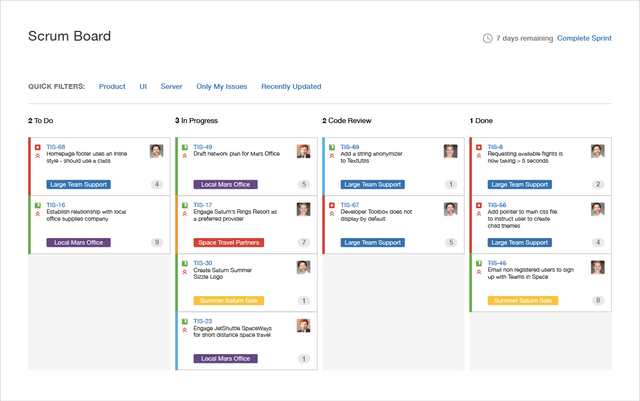What is agile project management?
Software teams have been embracing agile project management methodologies for nearly a decade, increasing their speed, collaboration, and ability to respond to market trends.But what is it, and can it help your software team? Here is everything you need to know to get started, or refine, your agile project management practices.
History
Agile project management is an iterative approach to managing software development projects that focuses on continuous releases and incorporating customer feedback with every iteration.Stemming from Toyota's lean manufacturing concept of the 1940s, software development teams have embraced agile methodologies to reduce waste and increase transparency while quickly addressing their customers' ever-changing needs. A stark change from waterfall project management that focuses on "big bang" launches, agile helps software teams collaborate better and innovate faster than ever before. Traditional agile project management can be categorized into two frameworks: scrum and kanban. While scrum is focused on fixed-length project iterations, kanban is focused on continuous releases. Upon completion, the team immediately moves on to the next.
How scrum works
Scrum is a framework for agile project management that uses fixed-length iterations of work, called sprints. There are four ceremonies that bring structure to each sprint.It all starts with the backlog, or body of work that needs to be done. In scrum, there are two backlogs: one is the product backlog (owned by the product owner) which is a prioritized list of features, and the other is the sprint backlog which is filled by taking issues from the top of the product backlog until the capacity for the next sprint is reached. Scrum teams have unique roles specific to their stake in the process. Typically there's a scrum master, or champion of the scrum method for the team; the product owner, who's the voice of the product; and the scrum team, who are often cross-functional team members in charge of getting s@#$ done.
The scrum board
A scrum board is used to visualize all the work in a given sprint. During the sprint planning meeting, the team moves items from the product backlog into the sprint backlog. Scrum boards can have multiple steps visible in the workflow, like To Do, In Progress, and Done. Scrum boards are the key component for increasing transparency in agile project management.
Interested in trying scrum? Here are some helpful tips to get you started.
How kanban works
Kanban is a framework for agile project management that matches the work to the team's capacity. It's focused on getting things done as fast as possible, giving teams the ability to react to change even faster than scrum.Unlike scrum, kanban has no backlogs (usually). Instead, work sits in the To Docolumn. This enables kanban teams to focus on continuous releases, which can be done at any time. All work is visible, scoped, and ready to execute on so that when something is completed, the team immediately moves on to the next. The amount of work is matched to the team's capacity through WIP limits, which is a predefined limit of work that can be in a single column at one time (except the To Do column).
The kanban board
A kanban board is used to visualize all the work that's being done. It's also used for planning resources allowing project managers to see the work and develop timelines accordingly. A kanban board is structured into columns and lanes that stories pass through on their way to completion. Stories sit in the To Do column until the WIP limit allows for the next task to be worked on. The list of work should be split into relatively small issues and organized by priority. As you can see in this example, lanes can help keep the higher priority items separated from "everything else."Interested in trying kanban? Here are some helpful tips to get you started.

Agile project management is an approach based on delivering requirements iteratively and incrementally throughout the project life cycle. At the core of agile Project management software is the requirement to exhibit central values and behaviours of trust, flexibility, empowerment and collaboration.
Agile Project Management helps the users to execute complex projects in a time-effective and intuitive manner, it creates suitable deadlines according to the submitted project details in the software, and you don’t have to depend on inaccurate guesses.